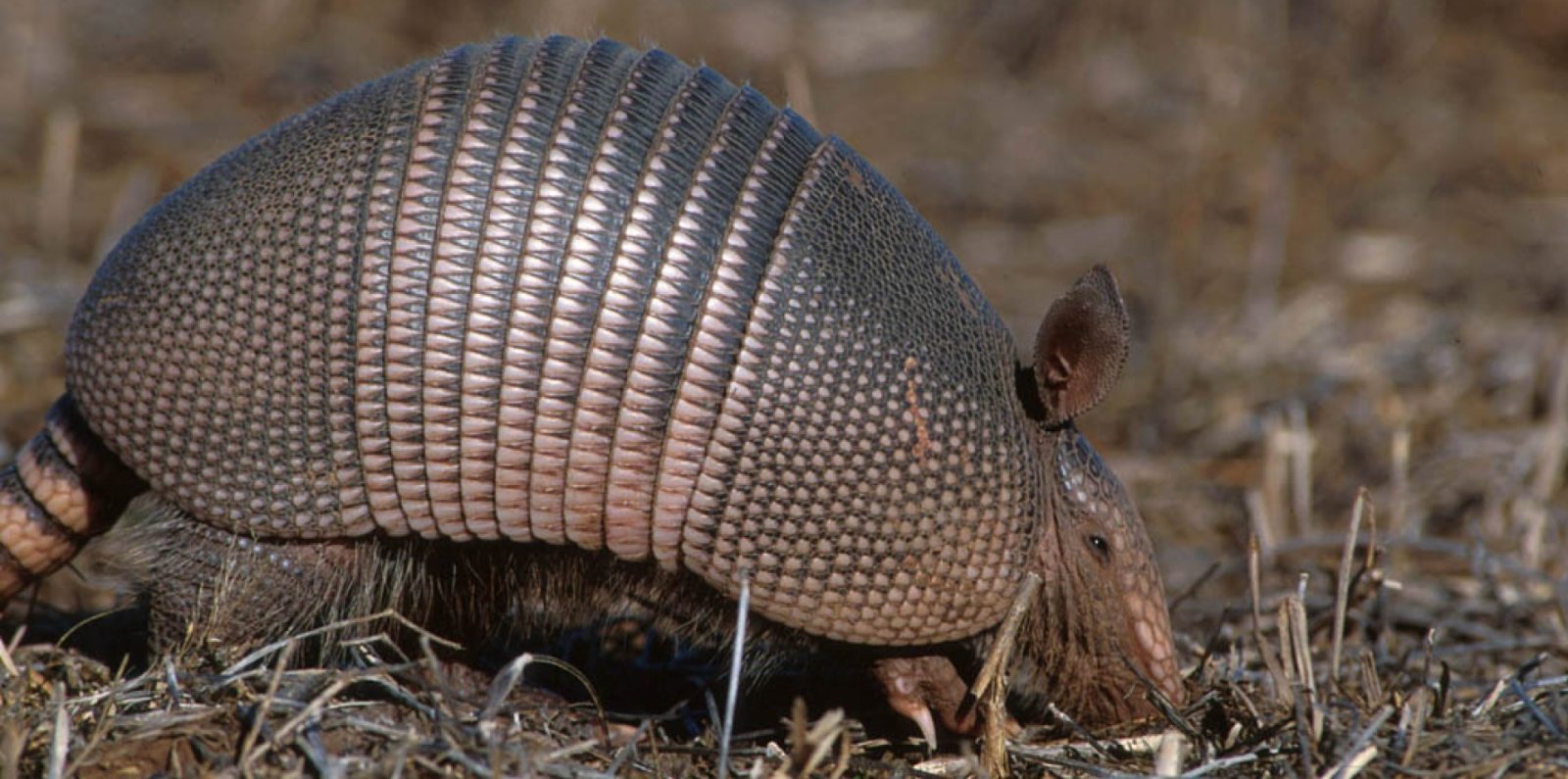
Nine-banded Armadillo

The nine-banded armadillo, also known as the nine-banded long-nosed armadillo or common long-nosed armadillo, is a mammal found in North, Central, and South America, making it the most widespread of the armadillos.
Its ancestors first appeared in South America, and remained there until the formation of the Isthmus of Panama allowed them to enter North America as part of the Great American Interchange. The nine-banded armadillo is a solitary, mainly nocturnal animal, found in many kinds of habitats, from mature and secondary rainforests to grassland and dry scrub. It is an insectivore, feeding mostly on ants, termites, and other small invertebrates. The armadillo can jump 91–120 cm straight in the air if sufficiently frightened, making it a particular danger on roads. It is the state small mammal of Texas.
- D. n. aequatorialis Lönnberg, 1913
- D. n. fenestratus Peters, 1864
- D. n. hoplites Allen, 1911
- D. n. mexianae Hagmann, 1908
- D. n. mexicanus Peters, 1864
- D. n. novemcinctus Linnaeus, 1758
North American subspecies have reduced genetic variability compared with the subspecies of South America, which means the armadillos of North America are descended from a relatively small number of individuals that migrated from south of the Rio Grande.
They can reproduce after they turn 1, and will usually reproduce every year, until the end of their lives at 12-15 years old.
They are currently listed as least concern
Below here, you will find a short video on these animals, and below that, will lie any articles written on this species now or in the future. Below both of these, we will list any opportunities to see this species in the wild that we can find. Hopefully over time, these will make it easier to see this species in the wild.










